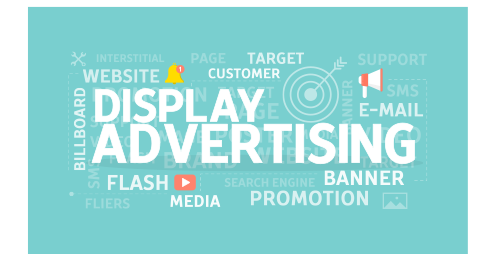What is display advertising?
Display advertising is just as it sounds. It is visual based advertising through the use of images and videos that are published on publisher websites such as the Google Display Network. These ads appear in the form of a banner on websites such as people.com and nytimes.com. There are different formats depending where the ads are placed – like desktop vs mobile, for example.
Display advertising is a great medium for advertisers looking to reach a large audience. It is also a perfect medium for product-based businesses as it attracts users to their product pages. New to display advertising? Learn the best way to build display ads.
Display advertising continues to grow in popularity as digital advertising continues to become the leading form of advertising.
Before executing your display campaigns, consider the following display advertising tips & tricks.
Tip #1 Include UTMs in your landing page link
This is important! If you want to track your campaigns through Google it is important that you include information related to your campaign in your landing page URL.
The information attached to your URL is called a ‘UTM’, which is a tracking parameter. The type of information you want to include in your URL would be campaign source, campaign medium and campaign name. You also have the option to include campaign term and content.
Including UTMs in your landing page URL allows you to test different creatives (with campaign term), and compare the performance of multiple campaigns (with campaign name).
You can build your URL with UTMs on this website.
Tip #2 Track your results weekly
To stay on top of your advertising goals, it is important to track your campaigns every week. An easy and free way to do this is by creating a spreadsheet in Google Sheets. Include all your current live campaigns so that you have an overall visual of your display advertising efforts.
The metrics you should have in your spreadsheet include impressions, clicks, CTR, Cost and CPC. You can also use page views to your landing page as a metric.
You want to ensure that you are tracking these numbers every week (i.e. every Monday), so that you can compare each week and make changes accordingly.
Having a tracking sheet allows you to understand the behavior of your campaigns by testing different components of your campaign such as your headline.
Tip #3 Refresh your creative once a month
To keep your brand alive and fresh, it is important to update your creative at least once a month. Whether that is strictly a color change or entire design change, making updates to your creative is something every advertiser should do.
Updating your creative also allows you to test your creatives. By changing a single element on your ad creative you can see whether it improved your CTR or not. Some components that you can change on your ad include: headline, description, call-to-action, colors, graphics.
Don’t worry – refreshing your ad creative doesn’t always mean changing your ad completely. It just means making minor adjustments/improvements so that you can A/B test your ads.
Tip #4 Have visually engaging creatives
Ads that are interactive tend to gain more attention from users. This includes rotating banners, GIFs, video etc.
Try to incorporate some interactivity within your ads so that they stand out on the page. An example of this would be to create a multi-frame ad where you tell a story about your brand.
Adacado can help you build your multi-frame ads! To start building your multi-frame ads, sign up here.
Tip #5 Ensure campaign pacing is on
Campaign pacing allows you to evenly spread out your media buy over the course of the day. That means, the impressions you buy will be served throughout the day. This feature allows you to track which hours of the day are most successful, and from there you can adjust.
Adacado makes it easy for you to select the days you would like your ads to be served. As well, Adacado’s algorithms ensure that your impressions are being served evenly throughout the day, and boosted at peak times (when people are most likely to click).

